Garden pond ideas – 10 ways to create a wildlife-friendly and soothing water feature
Take the plunge with our garden pond ideas, no matter how big or small your outdoor space

Having some kind of water feature in your garden adds a whole new dimension to your outdoor space. Garden pond ideas bring aesthetic appeal and tranquility, plus they're one of the best ways you can support local wildlife.
Whether you have a large and verdant lawn or a small urban garden, there are plenty of options for creating a soothing pond you can enjoy.
Garden pond ideas
First, you'll need to decide whether to go big or small, neat and spherical or a curvy and natural form. Whatever you go for when bringing this garden idea to life, adding a pond is a sure-fire way to make your garden more interesting.
There are lots of ways to create an eye-catching pond that will give a classic feel to your garden while providing a habitat and breeding ground for wildlife. Dip your toe in with our garden pond ideas and expert tips.
1. Create a makeshift, mini pond
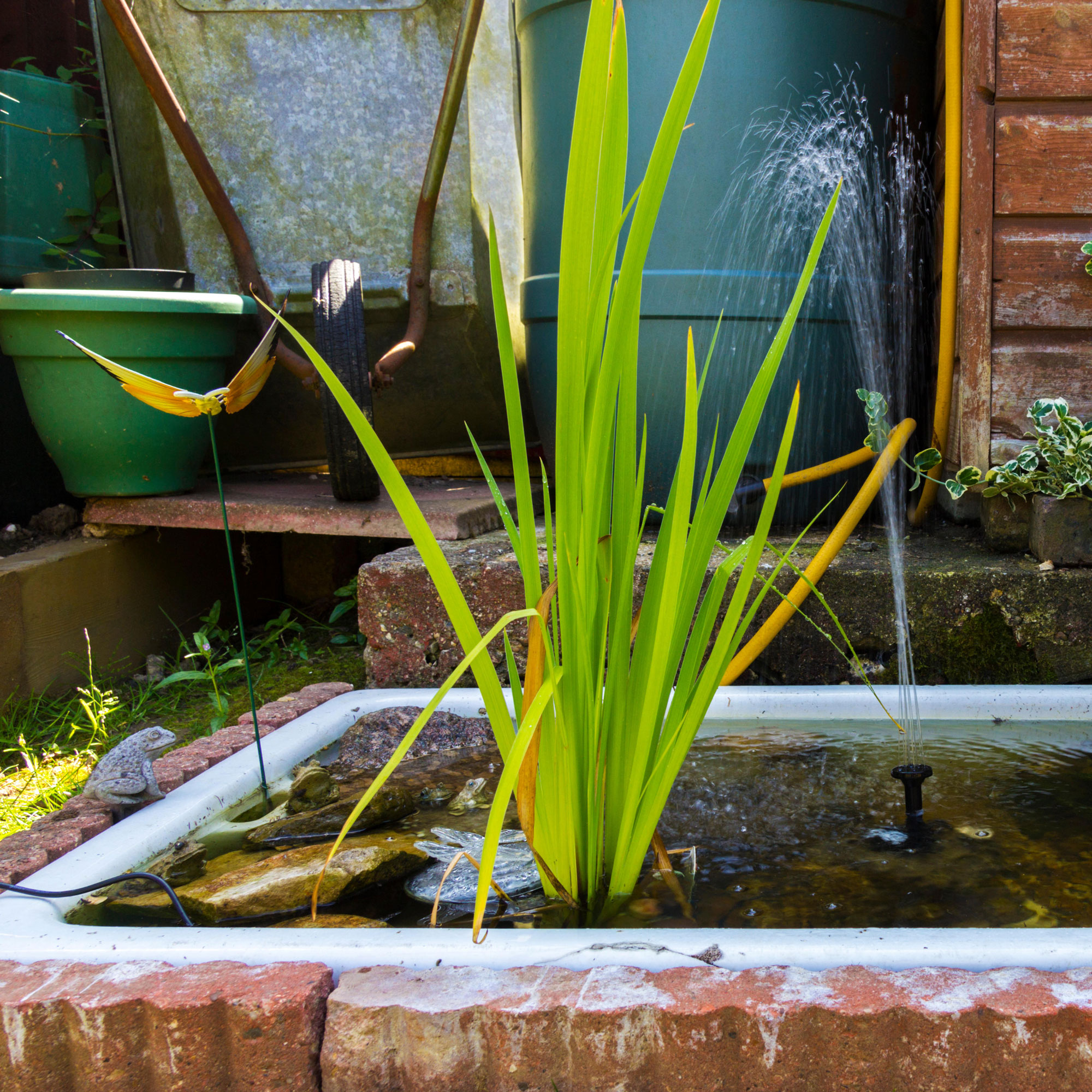
Ponds are a fabulous wildlife garden idea, making a brilliant home for lots of insects, birds, hedgehogs, and bats. Keep things really simple and create a mini pond with an old plastic container, fish tank, or even an old sink as seen in the picture above.
This could also be a lovely activity for kids. You can either leave the container outside or dig a small hole in the ground so that your mini pond is at ground level.
Fill it with clean kids' sand, stones, and gravel. You could also add some pond plants and a ramp made from a small piece of wood or cane to help animals like hedgehogs and birds get in and out.
Get the Ideal Home Newsletter
Sign up to our newsletter for style and decor inspiration, house makeovers, project advice and more.
2. Go formal with a regency style pond and fountain
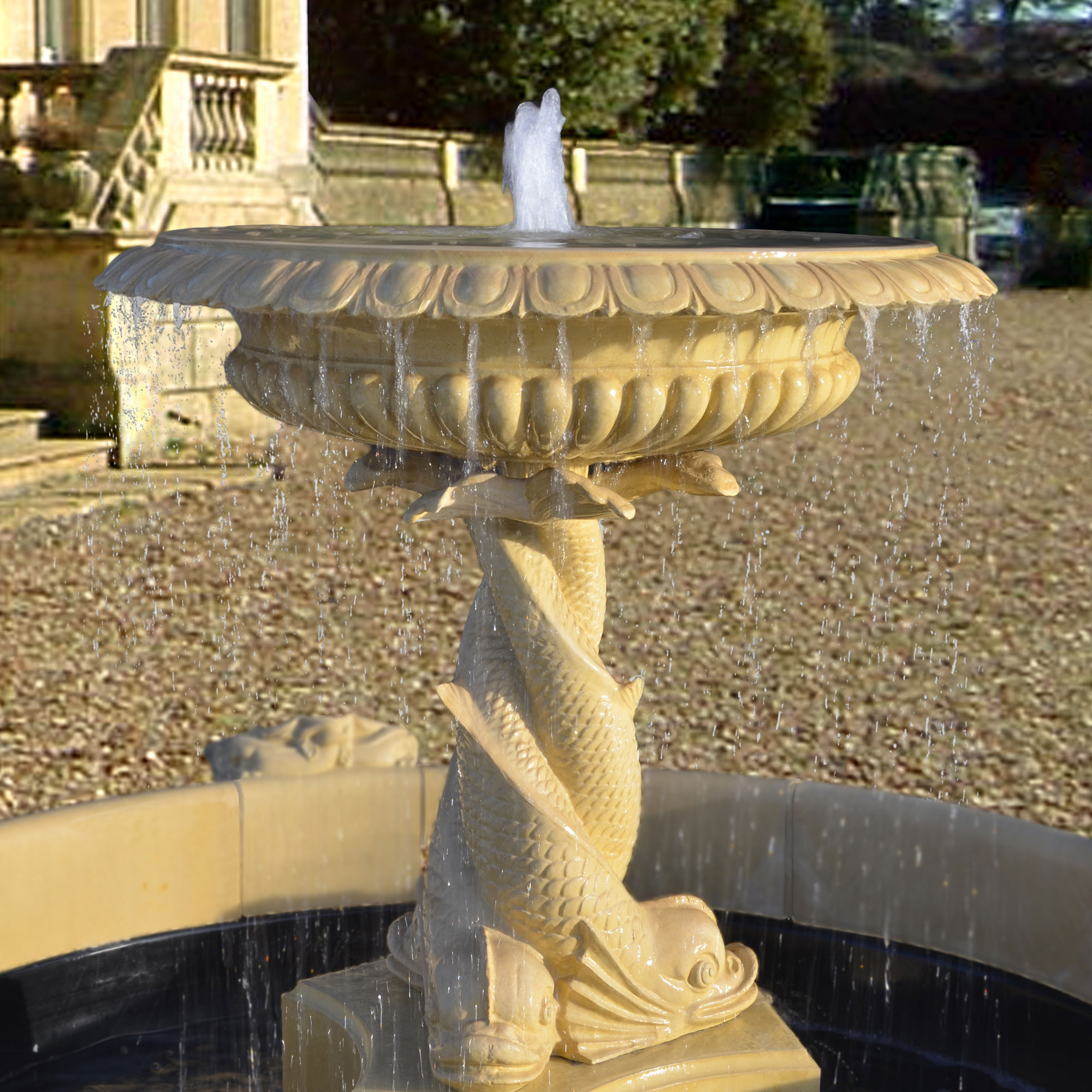
If the new series of Bridgerton has inspired you to bring a regency-inspired look to your home and garden, a pond could be the way to go. Water features are a pivotal focal point for all regency-style gardens and you also get the benefit of the soothing sound of water.
'We’ve seen every type of garden water feature over the years,' comments Crown Pavilions. The luxury garden room and gazebo company says that garden pond ideas don’t have to be grand to be noteworthy.
'Creating a small, circular pond with a single tier, regency style stone fountain will bring a touch of serenity and elegance to any garden,' says Crown Pavilions.
3. Use rainwater
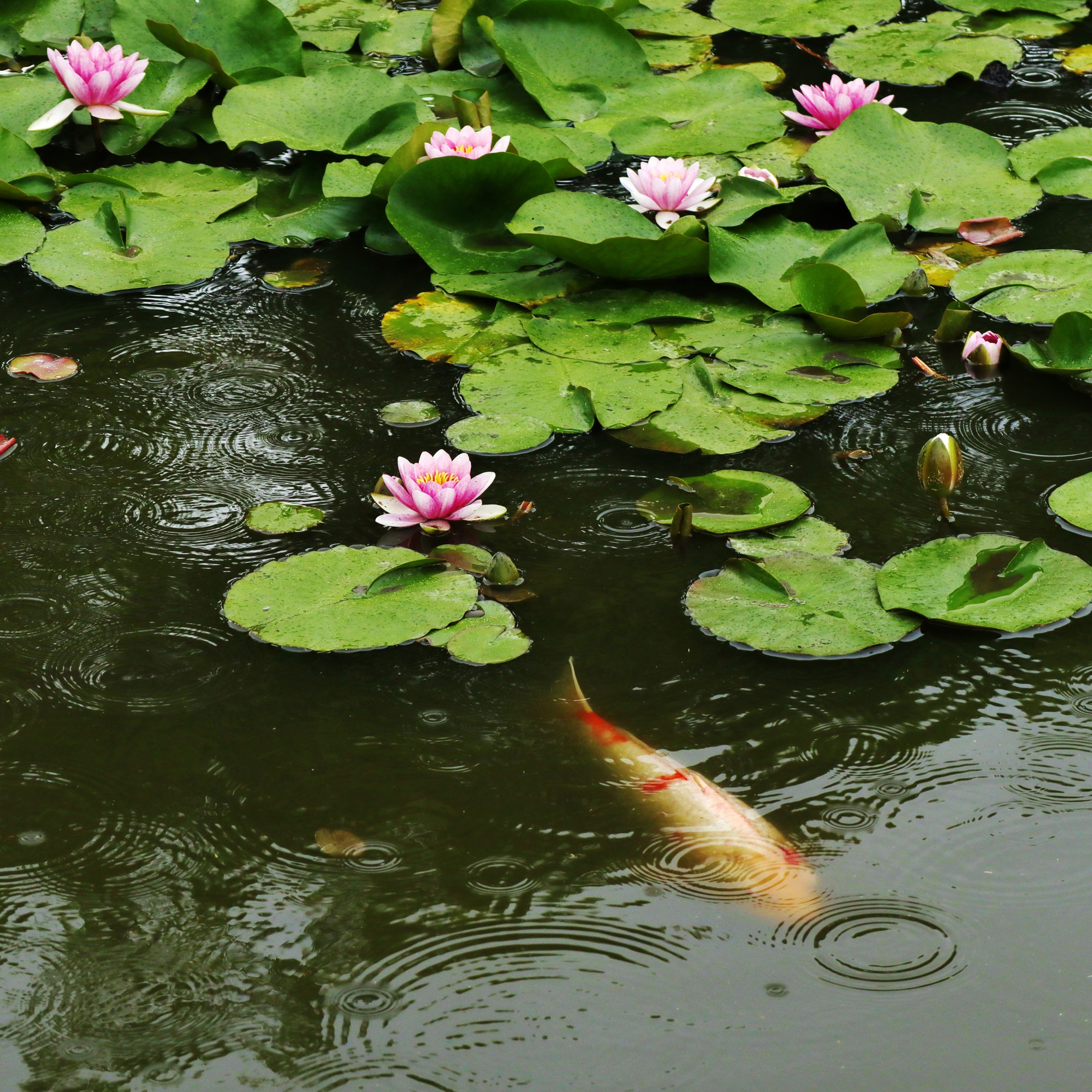
Make the most of rainy weather and leave your pond to fill up with rainwater. Although it might take a bit of patience, depending on the size of your pond, this is actually the best way to do it. No garden hoses are needed as tap water contains chemicals that could be harmful to wildlife.
4. Install a raised pond
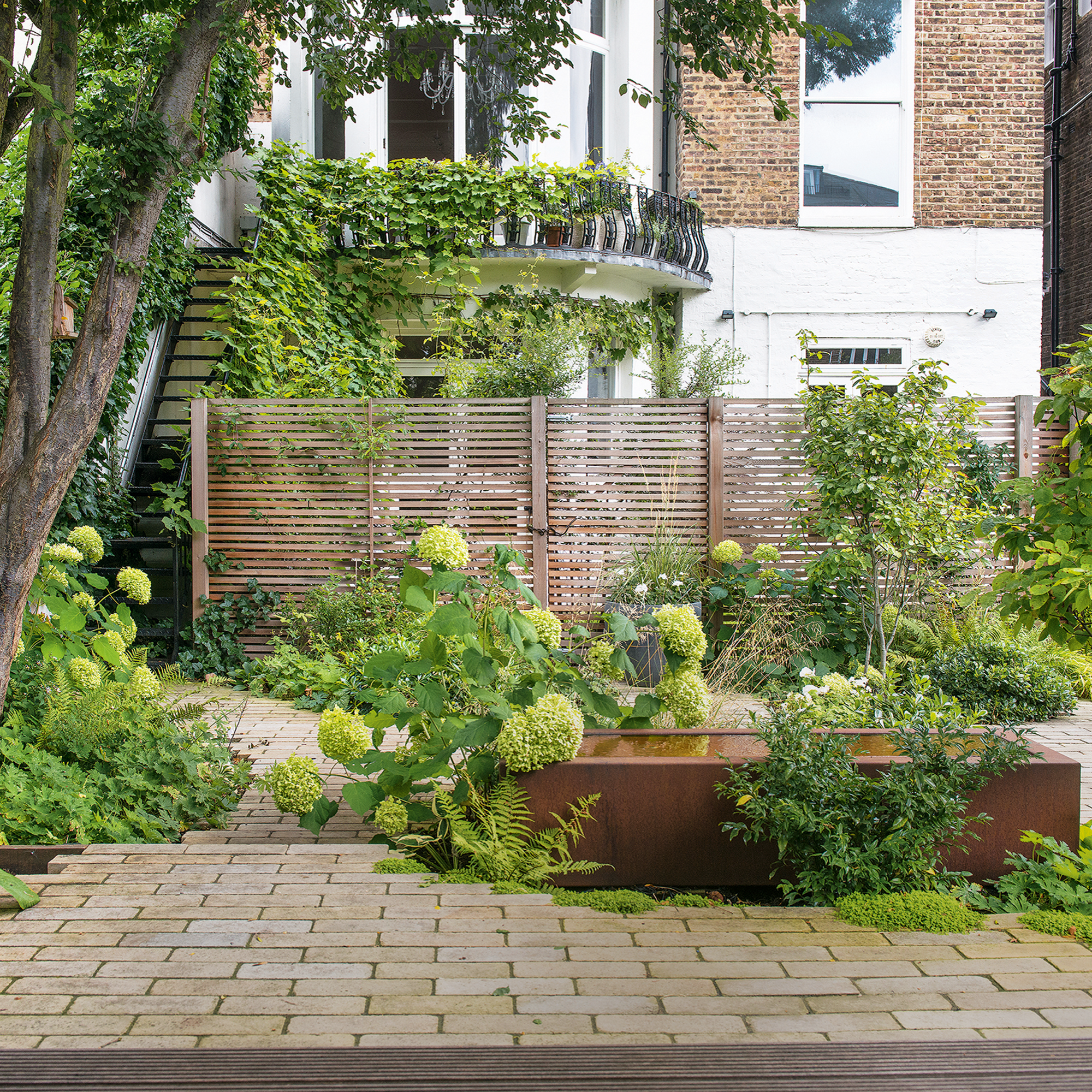
A hassle-free option is to install a raised pond. They often come in wood, brick, or paving and are fairly easy to assemble.
It creates a lovely spot to perch and creates a striking feature. One other positive is that you might even be able to take it with you if you move house!
5. Plant around the edge
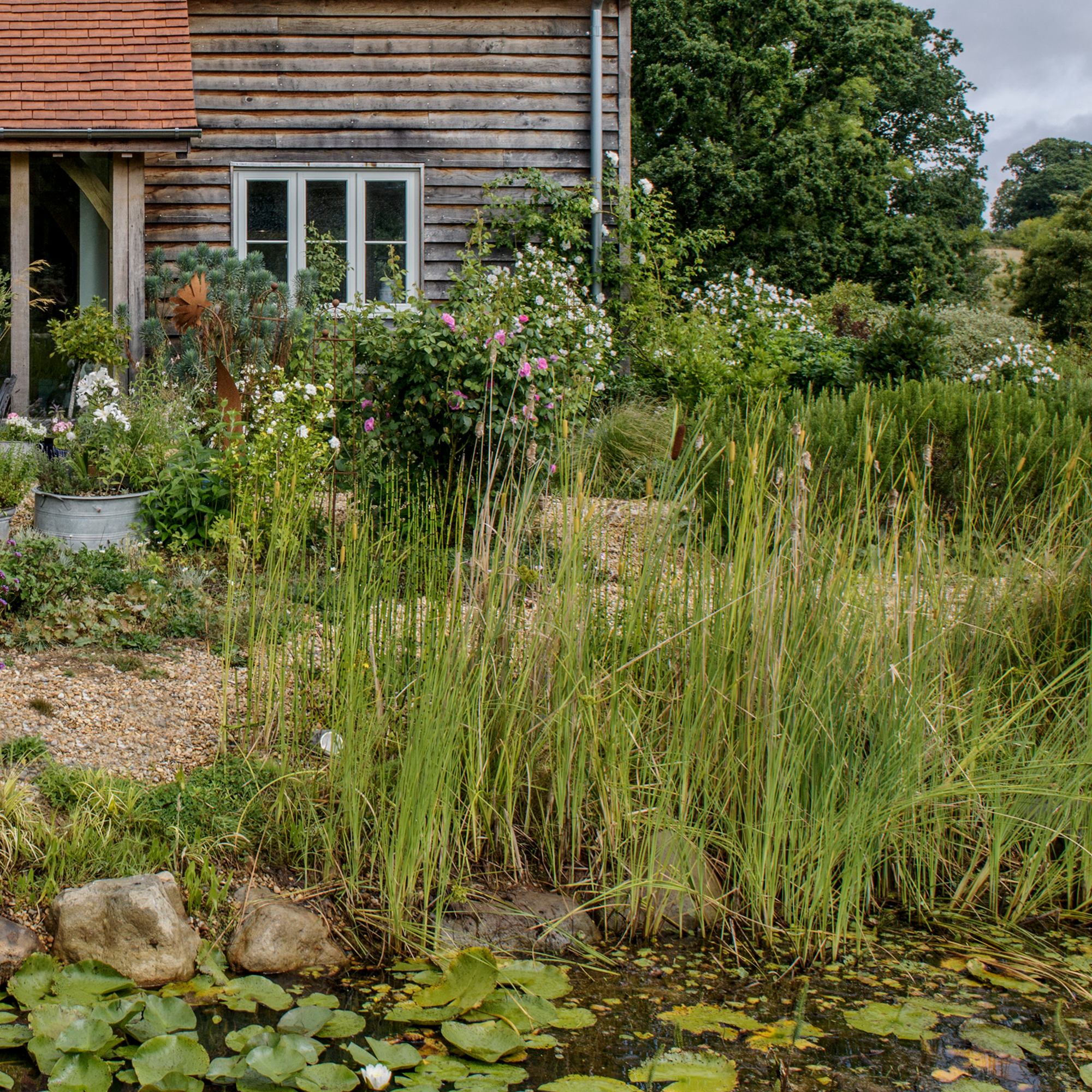
Plant marginal plants, which grow happily on the edge of ponds or in shallow areas. These will help your pond to blend in with the rest of your garden and look like it's always been there.
Try growing flowering rush or rich purple Japanese iris on some ledges around your pond or in the shallowest parts. Also, it's worth thinking about which plants will look good overhanging the pond - a lovely Acer or plant with striking foliage will reflect beautifully off the water's surface and create shadows.
6. Keep things shallow for wildlife
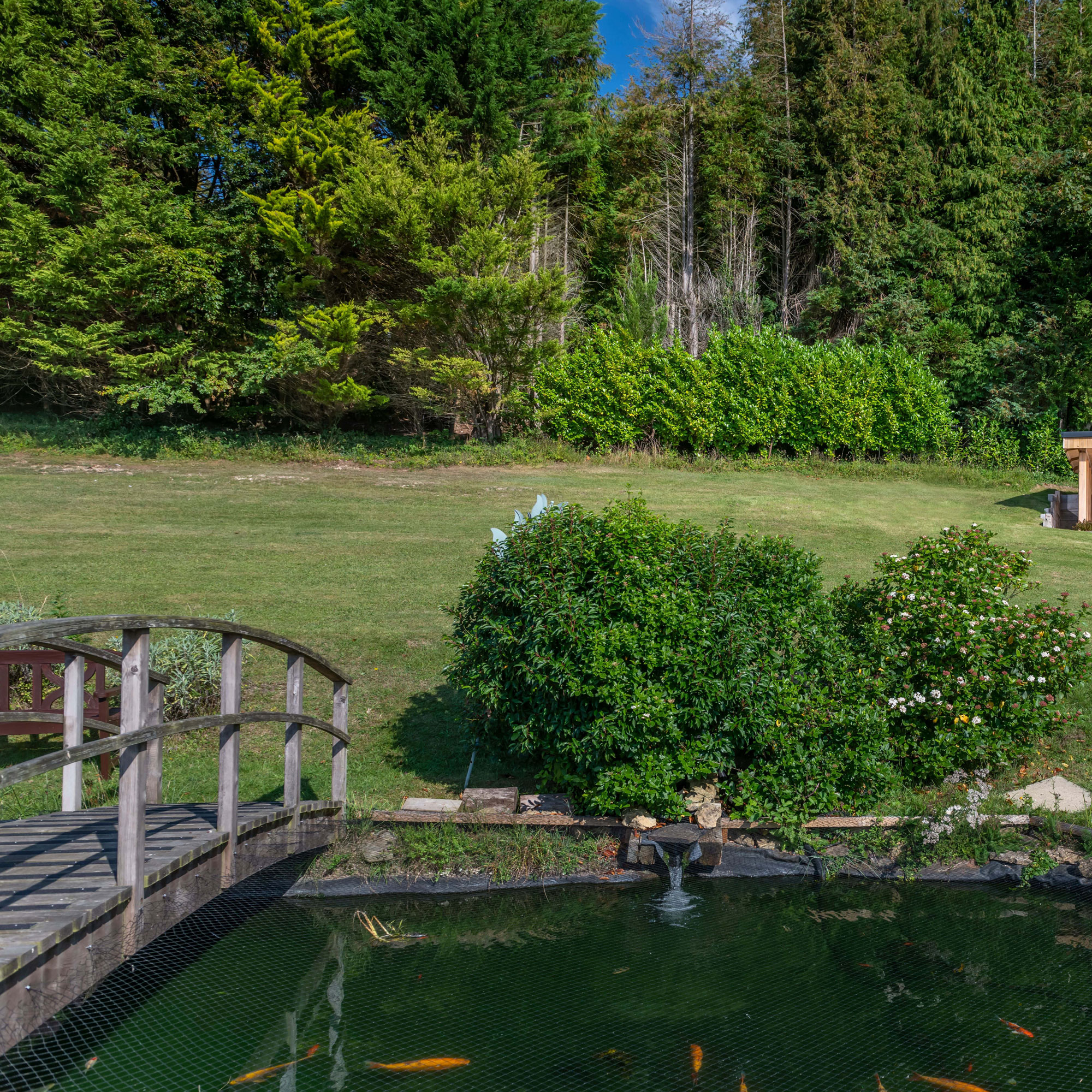
When it comes to how deep your pond should be, it depends on whether the pond is for your own enjoyment or primarily for wildlife. If you're installing a pond to complement existing sustainable garden ideas, you'll want to keep things relatively shallow.
A shallow pond with some cover will soon attract local wildlife from water beetles and bees to frogs and dragonflies. If you want to keep Koi in your pond, they will need a depth of around 4-5 feet.
7. Create a pond walkway with stepping stones
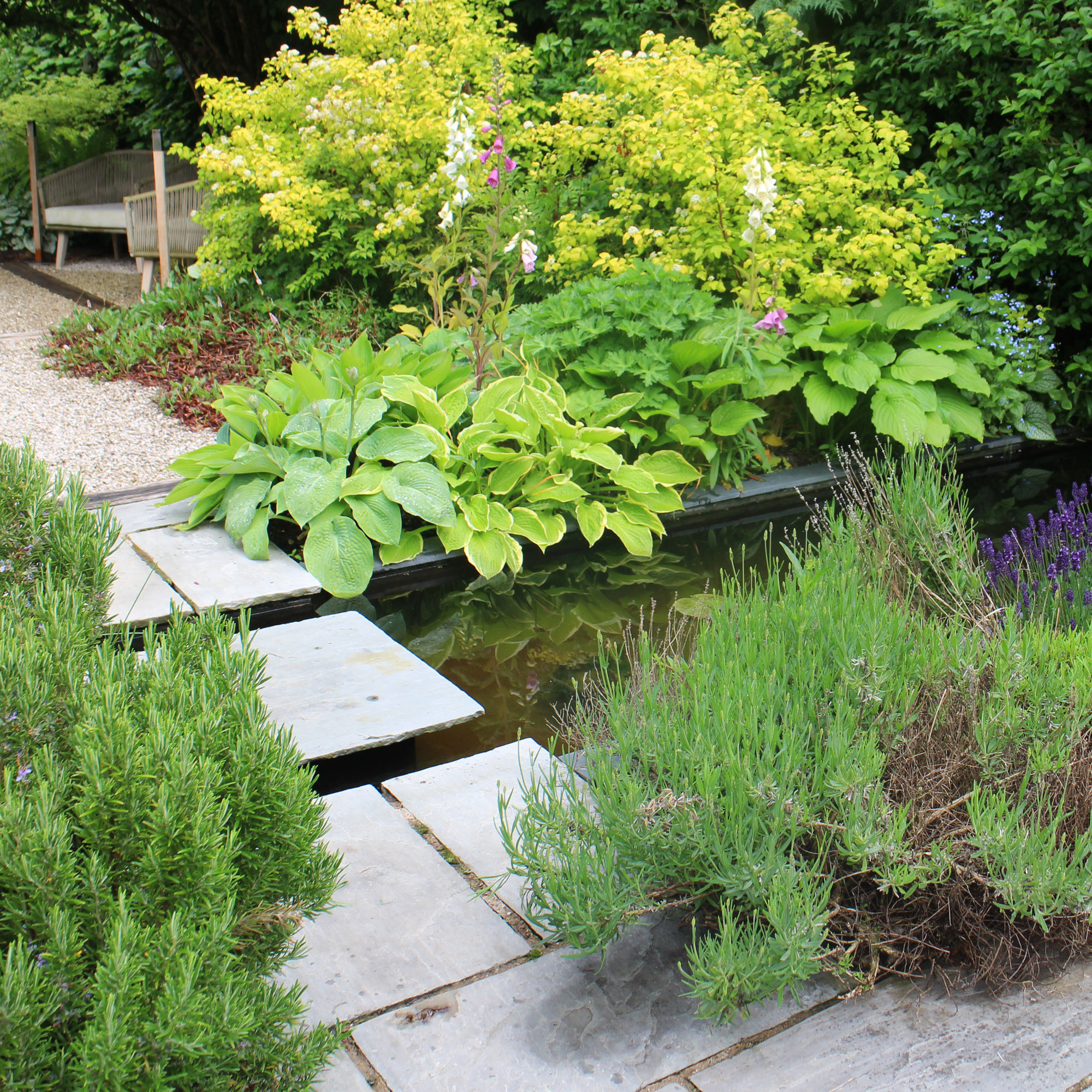
If you're after relaxing and zen garden ideas, garden ponds are a really good option. For a playful touch that's also very practical for moving around your garden, add a few stepping stones.
This will create a super calming and immersive outdoor space that invites visitors to explore.
8. Build a pond just for you
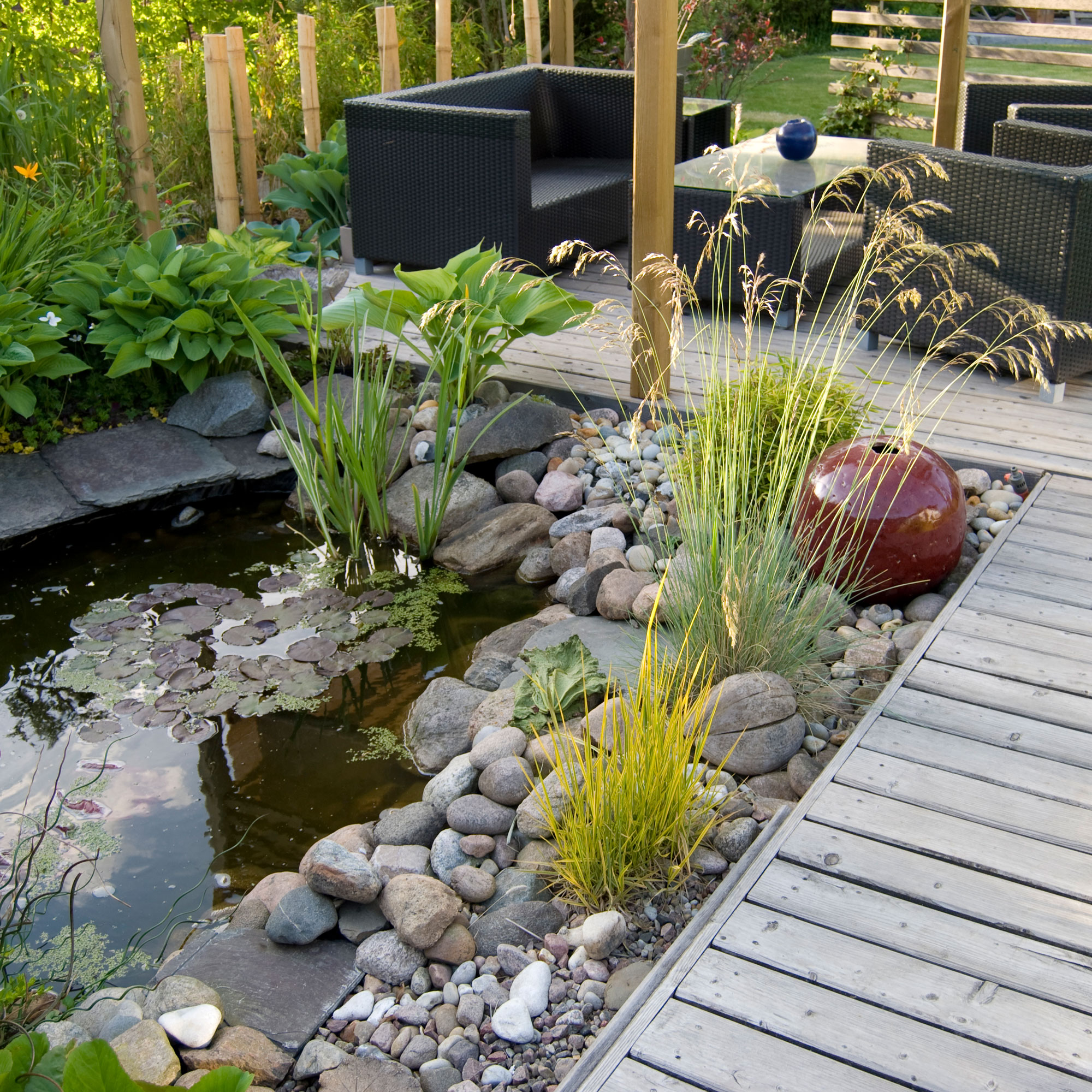
A garden pond will give you hours of enjoyment and a chance to observe nature. According to Samantha Richards from Gazeboshop, adding a large water feature is all about personal enjoyment and could in fact make your home harder to sell.
Some buyers might see a feature such as a Koi pond as a red flag, as it does have significant ongoing maintenance costs, from water and chemicals to fish food and electricity. Unlike some garden updates that can add value to your home, such as space for home bars and garden rooms, a garden pond is something you can do for the pure fun of it.
We love how a pond has been incorporated into the outdoor seating area and pathway above.
9. Add a modern water feature
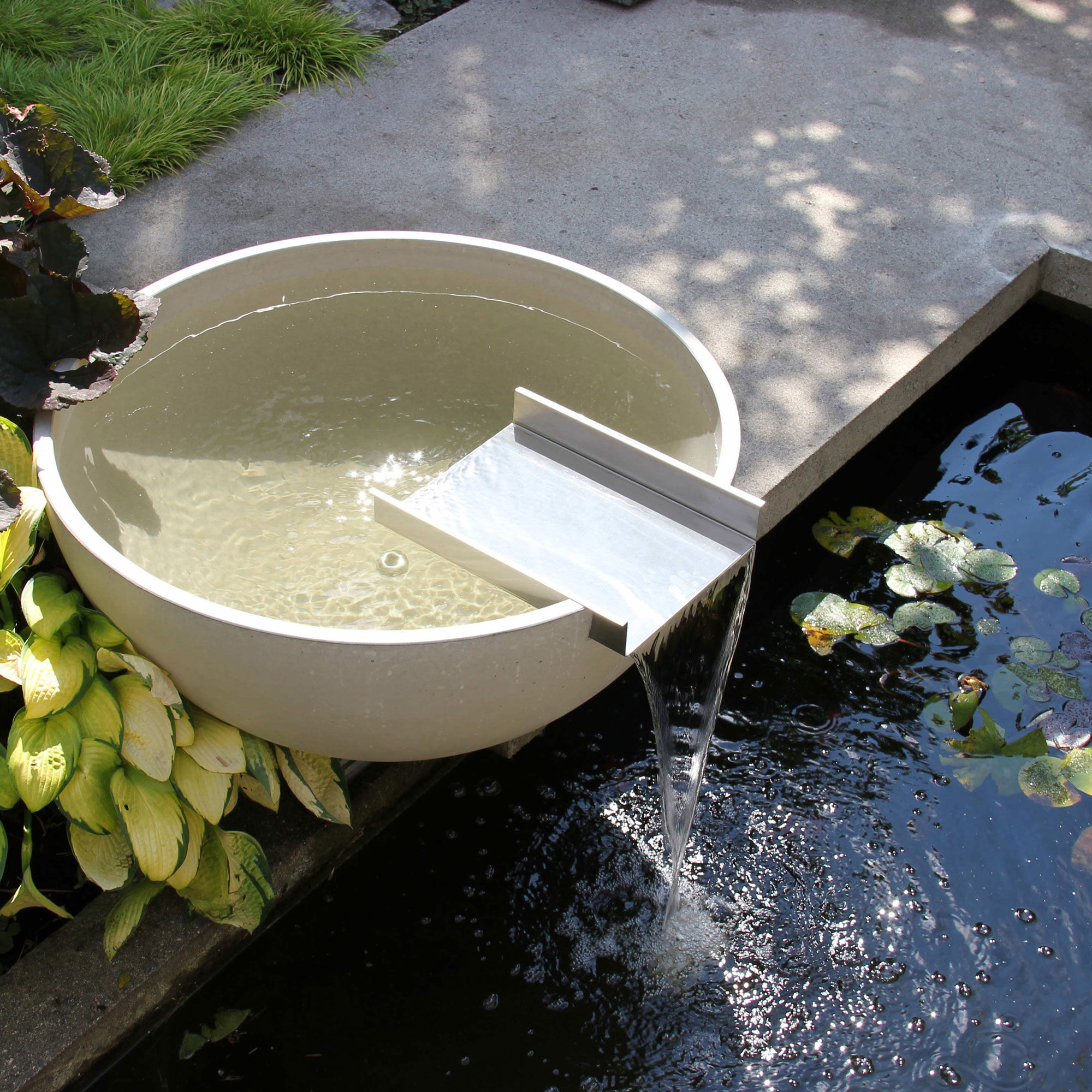
Because nothing soothes the soul like the gentle trickling of a fountain, why not add a water feature? This spherical water bowl brings character and a modern look.
This fountain has a small chute that the water can flow through into your pond, keeping it well oxygenated.
10. Light it up
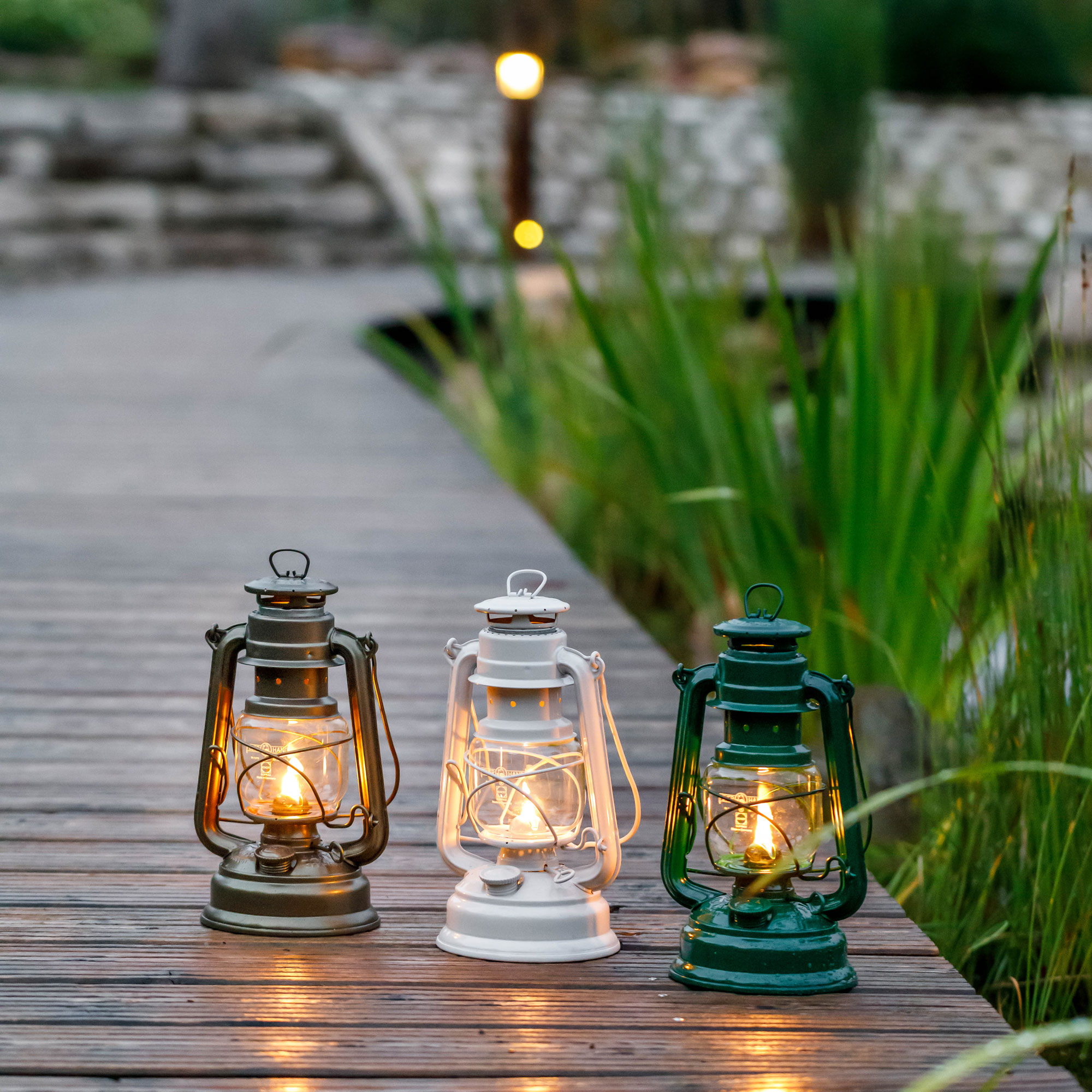
Enjoy your outdoor space after dusk with garden lighting ideas. Lanterns, festoon lighting and spotlights will play on the surface of your pond.
You can even get solar-powered LED fountains that go in your pond. These will light up at night and give a rainbow-coloured display.
How do I make a simple garden pond?
You will need a pond liner, either made from PVC or rubber, builder's sand, a spirit level, rocks or gravel, and a spade or digger. John Dempsey, gardening expert from Housetastic says you need to first measure and mark out the area you want the pond to go. Dig the hole using a spirit level to make sure the sides are level and dig around 60-80cm down.
Then remove any stones or debris at the bottom of the hole and lay a thick layer of 5-6cm of builder's sand at the bottom. Next, John says to place the liner on top of the sand and pin it all around. Add rocks or gravel on top of the lining if you want to, then add rainwater. A week after filling the pond with water, he says you can then introduce plants.
Do remember to add a water filter to stop the water going stagnant otherwise you may have to learn how to get rid of pond algae which is likely to spread as a result.
How deep should a garden pond be?
Garden designer Rosemary Coldstream says the depth of your garden pond depends on what you want to have in the pond. 'Minimum 600mm for dwarf water lilies, 800mm for standard water lilies.
'For fish especially koi min 1.2m over 40% of the pond area,' she says. Rosemary adds that you can also have a very shallow ornamental pond where the water skims the surface.
Where is the best place to put a pond in a garden?
We think the best location for your garden pond is a sunny spot visible from your house, patio or conservatory. This means you can enjoy watching wildlife come and go from inside with a cup of tea, or from the patio.
Plus, compared to a pond hidden at the end of the garden, it'll be easier to keep on top of. Evie Lane from Primrose recommends you choose an area that gets both sunlight and shade throughout the day to attract the greatest variety of wildlife.
A spot that gets over six hours of direct sunlight a day could cause excess algae growth, warns gardening expert John Dempsey. He also says placing it on a slope will encourage wildlife to dip in and out.
What do you put in the bottom of a garden pond?
'Gravel is good for ponds with fish; slate, pebbles, and rocks will hide a liner and are good for the general pond health,' says Rosemary. For a more formal pond without fish, the garden designer says you don’t need anything, especially if you are using black GRP, as you get will get a lovely reflective effect.
A layer of gravel at the bottom of your pond can help to make it look more natural and provides a place for plants to attach their roots. You can use sand, but gravel is less likely to pass through any small tears in the pond's lining.

Millie Hurst was Senior Content Editor at Ideal Home from 2020-2022, and is now Section Editor at Homes & Gardens. Before stepping into the world of interiors, she worked as a Senior SEO Editor for News UK in both London and New York. You can usually find her looking up trending terms and finding real-life budget makeovers our readers love. Millie came up with the website's daily dupes article which gives readers ways to curate a stylish home for less.
-
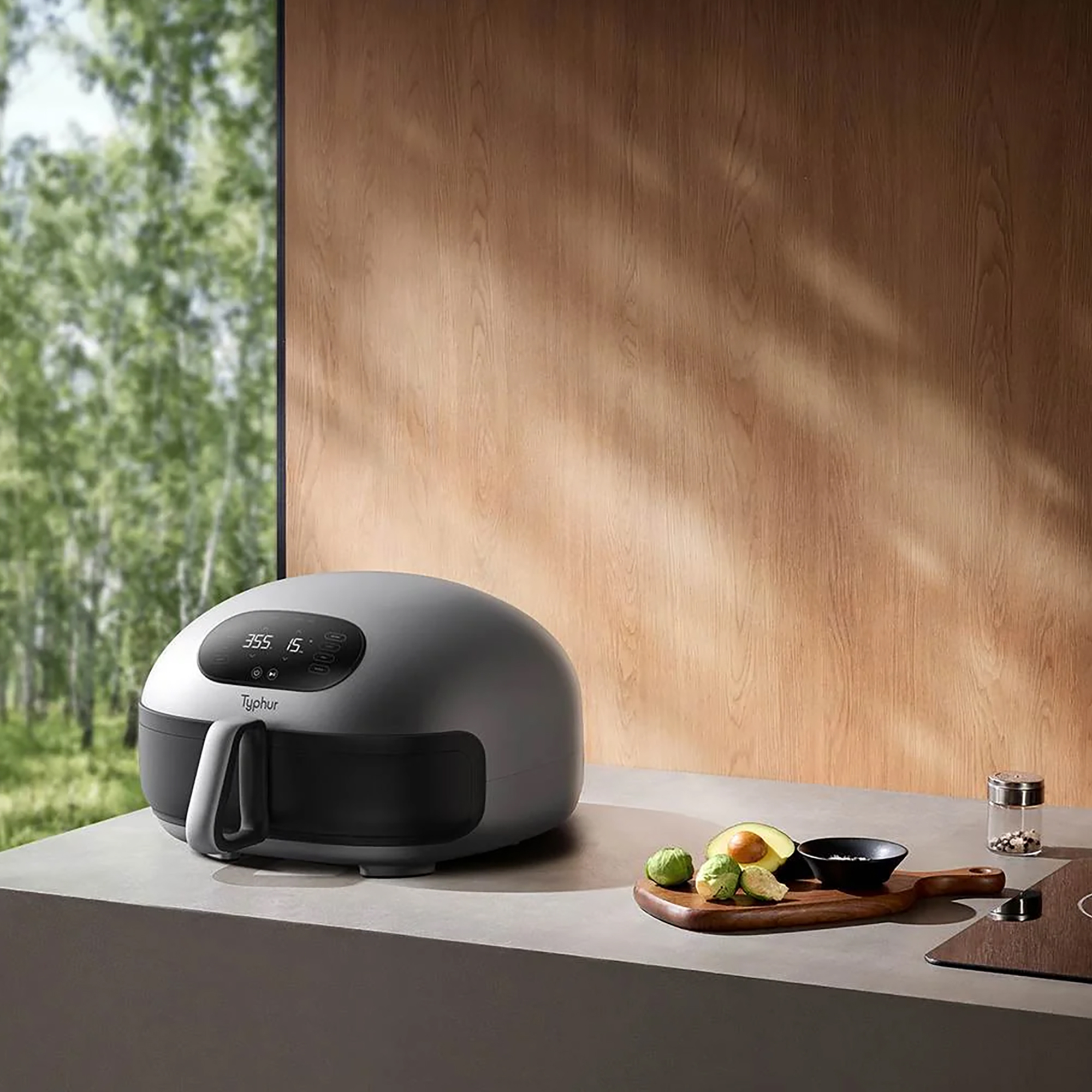 Typhur Dome 2 air fryer review – a glimpse into the future of air frying
Typhur Dome 2 air fryer review – a glimpse into the future of air fryingThe Typhur Dome 2 cooks food brilliantly and has all sorts of benefits, but is it worth the £499 price tag?
By Ellen Manning
-
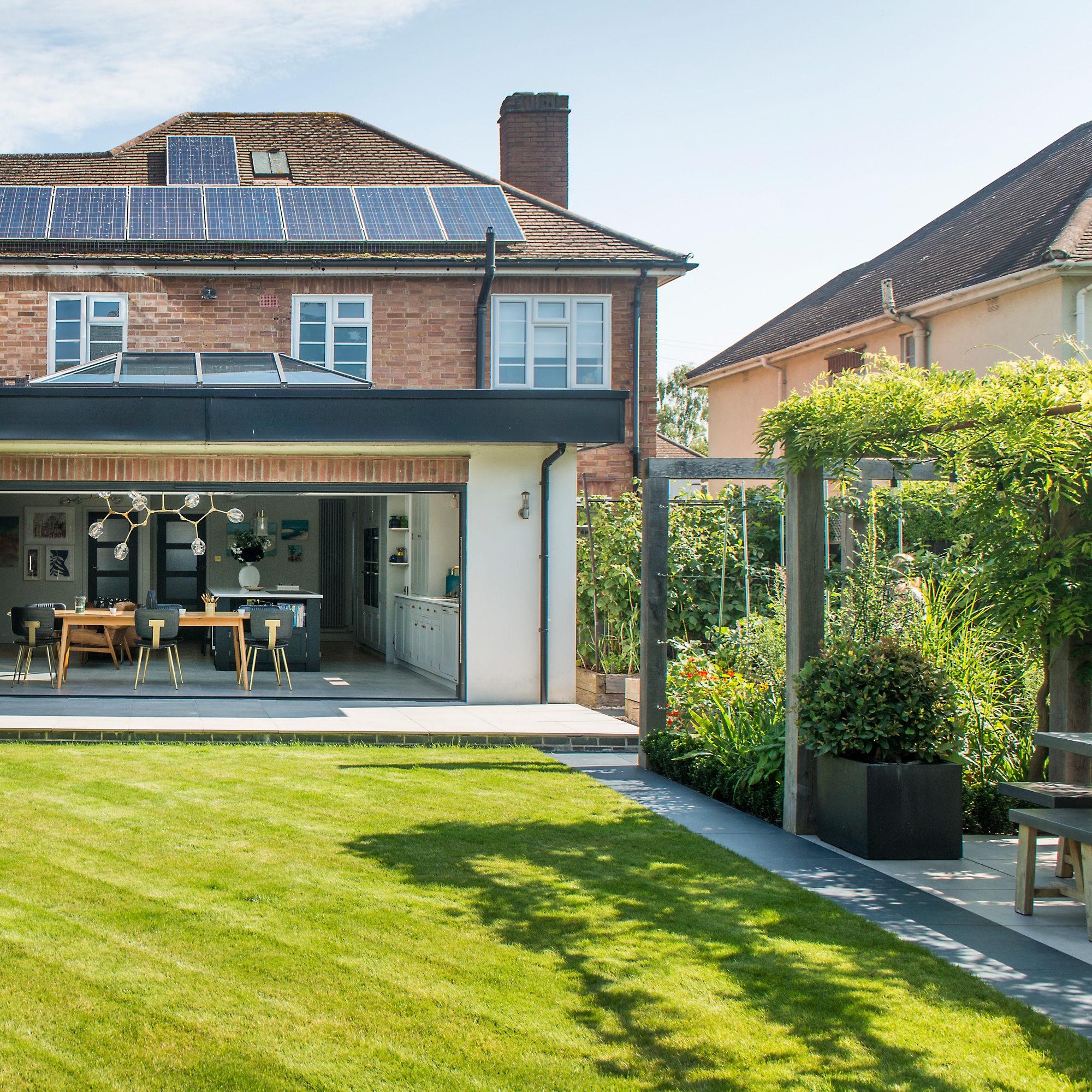 In creating their lush multi-use garden, the owners have cleverly futureproofed the space for years to come
In creating their lush multi-use garden, the owners have cleverly futureproofed the space for years to comeWith a zone for dining, a veg plot, a relaxing sun trap, and space for quiet contemplation
By Ginevra Benedetti
-
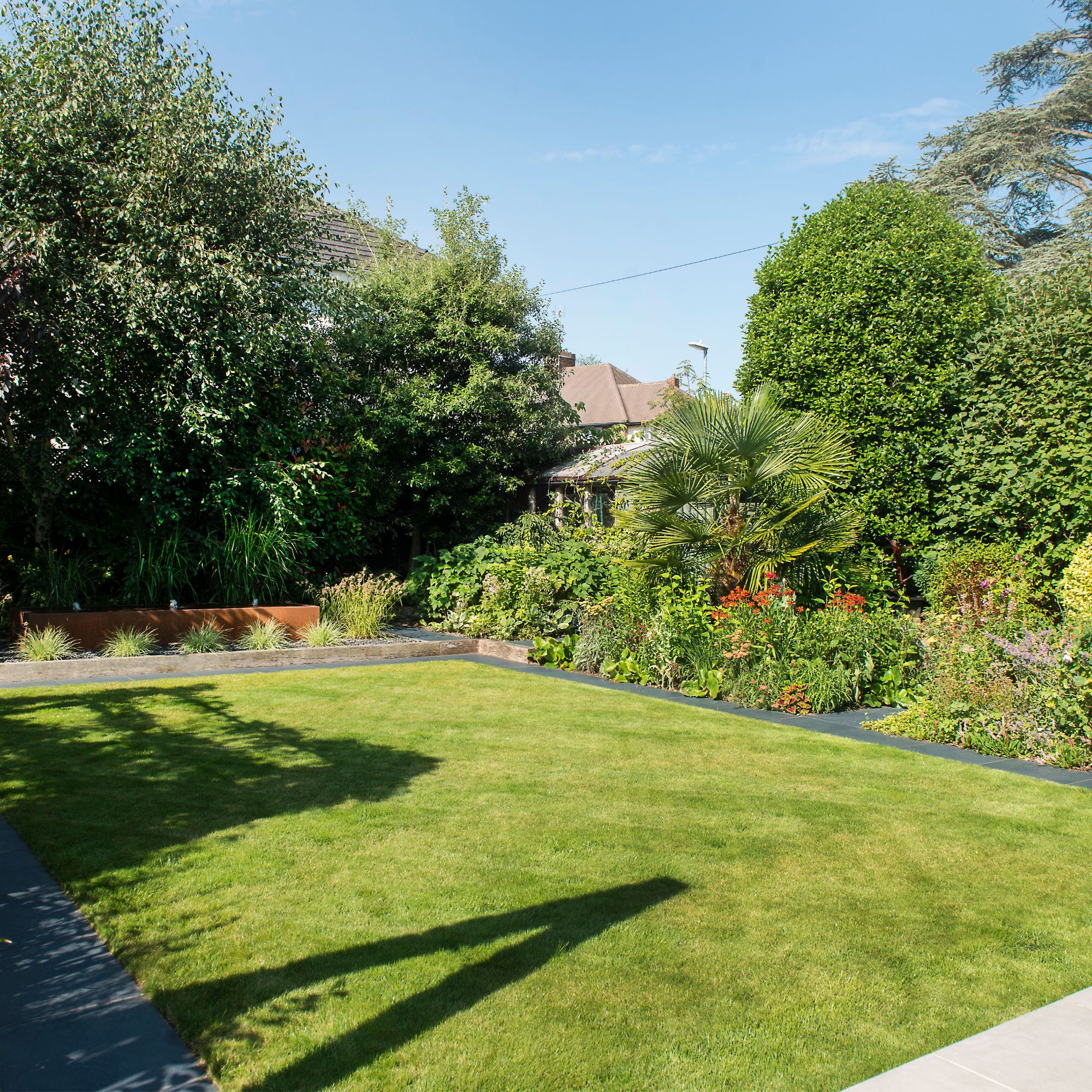 5 reasons why your grass seed isn’t growing and what you can do to help, according to garden experts
5 reasons why your grass seed isn’t growing and what you can do to help, according to garden expertsFor a lush, green lawn, you have to ensure the conditions are just right
By Kezia Reynolds